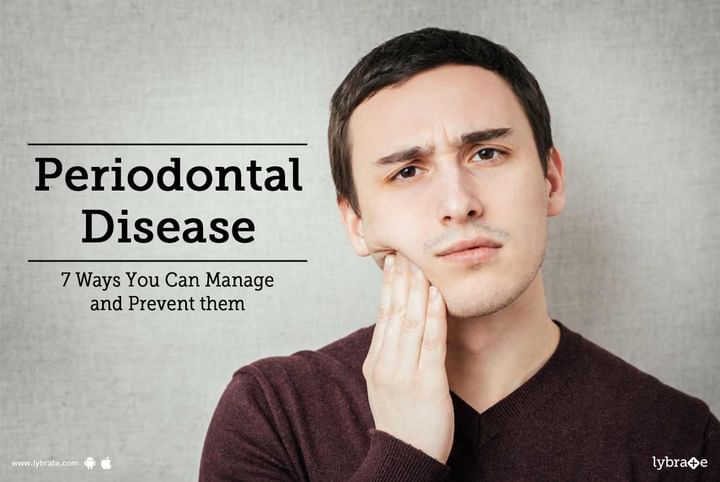Periodontal Disease - 7 Ways You Can Manage and Prevent them
The gums are also called the periodontium which means perio for around and dontium for tooth as the gums are literally present "around the tooth." There is a softer mucosal portion that runs along the tooth in a curved manner and a stronger fibrous portion that connects the tooth to the jaw bone. Together, they provide the structural support for the tooth to be held in place. In addition they also have an aesthetic value with the healthy pink color.
The mouth has the largest number of bacteria in the body, which act on the food debris that is present on the tooth and the gums. This causes infection in both the gums and the tooth.
Types: Periodontal disease can be localized or general.
- Localized disease happens when a tooth is not accessible for thorough cleaning. The inside surface of lower incisors and outer surfaces of the upper last molars are common areas of localized periodontal disease.
- Generalized periodontal disease can be due to conditions like pregnancy, puberty, diabetes problem where gums around all the teeth are affected.
Symptoms: In both the cases, the following symptoms ensue:
- The gums are of a healthy pink color and if they turn darker hue of pink
- Swollen and/or painful gums
- Spontaneous bleeding: This may be localized or generalized
- Chronic bad breath: Due to food accumulation in the infected gums
- If it continues to form an abscess, pressure on the gums can produce pus
- Bad taste in the mouth (arising from pus in the gums)
- Gingival recession, producing an effect of having longer tooth
- Dentin is exposed leading sensitivity to hot or cold foods
- Loosening of the tooth
- Painful chewing, as it puts pressure on the inflamed periodontium
- Dentist will identify what are called pockets, which is an indication of severity - the deeper the pockets, the severe the disease.
Management and Prevention: Gum disease is very easy to identify and can be completely cured.
- Regular brushing and flossing can help maintain regular oral hygiene
- With each brushing session, plain finger massage of the gums improves blood circulation and their overall health
- Regular use of mouth rinse is a good way to improve gum health
- Regular visits to the dentist can help keep a check on the health of the teeth and the gums - early identification of disease and early treatment
- Once it has set in, deep scaling followed by root planing may be required to thoroughly clear out the infection
- More surgical options like gingival grafts, flap surgery, bone grafting in case of severe bone loss may be required.
- Management of conditions like diabetes
The best way to avoid periodontal disease is to know its symptoms, follow oral hygiene practices, and consult a dentist regularly.



+1.svg)
